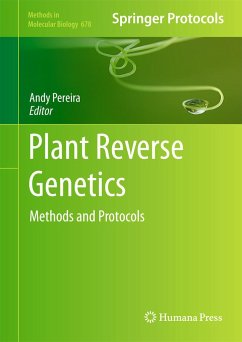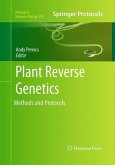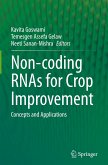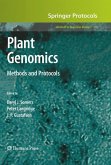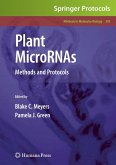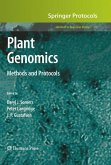After the generation of genome sequence data from a wide variety of plants, databases are filled with sequence information of genes with no known biological function, and while bioinformatics tools can help analyze genome sequences and predict gene structures, experimental approaches to discover gene functions need to be widely implemented. In Plant Reverse Genetics: Methods and Protocols, leading researchers in the field describe cutting-edge methods, both high-throughput and genome-wide, involving the models Arabidopsis and rice as well as several other plants to provide comparative functional genomics information. With chapters on the analysis of high-throughput genome sequence data, the identification of non-coding RNA from sequence information, the comprehensive analysis of gene expression by microarrays, and metabolomic analysis, the thorough methods of the book are fully supported by scripts to aid their computational use. Written in the highly successful Methods in Molecular Biology(TM) series format, the chapters contain introductions to their respective topics, lists of the necessary materials, step-by-step, readily reproducible laboratory protocols, and notes on troubleshooting and avoiding known pitfalls. Authoritative and essential, Plant Reverse Genetics: Methods and Protocols is an ideal guide for researchers seeking an understanding of how the complex web of plant genes work together in a systems biology view.
Hinweis: Dieser Artikel kann nur an eine deutsche Lieferadresse ausgeliefert werden.
Hinweis: Dieser Artikel kann nur an eine deutsche Lieferadresse ausgeliefert werden.
From the reviews:
"This book includes a compendium of methods and protocols derived from functional genomics that have been developed during the last decade ... . The book is organized in chapters written by leading researchers from different groups ... . Large scale phenotyping is also described with protocols suitable for application in different lab conditions. ... Gramene database is presented as an example of integrated information ... derived from different species, providing details of the information gathered in it as well as available tools for sequence comparisons." (Ruth Heinz and Norma Paniego, Boletin de Bibleoteca del IMYZA-INTA, Issue 26, June, 2011)
"This book includes a compendium of methods and protocols derived from functional genomics that have been developed during the last decade ... . The book is organized in chapters written by leading researchers from different groups ... . Large scale phenotyping is also described with protocols suitable for application in different lab conditions. ... Gramene database is presented as an example of integrated information ... derived from different species, providing details of the information gathered in it as well as available tools for sequence comparisons." (Ruth Heinz and Norma Paniego, Boletin de Bibleoteca del IMYZA-INTA, Issue 26, June, 2011)

